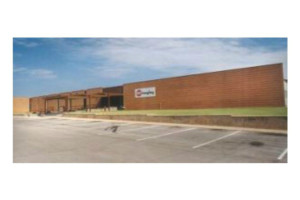
Colleges Looking To Real Estate As A Shield From Volatility



Investors are diving into the U.S. industrial market, chasing after a property type that’s having one of its best recovery cycles on record because of the never-ending need for more e-commerce distribution space. However, with strong performance come higher prices, a trend that’s pushed some firms out of the market and may eventually shrink yields if demand cools down.
Last year the U.S. industrial sector registered net absorption of 238.6 million sq. ft., a high water mark for the sector for net absorption gains, according to a recent report from real estate services firm Cushman & Wakefield. Further, the national vacancy rate dropped for the 23rd consecutive quarter in the last three months of 2015, to about 7 percent, the longest streak of net occupancy growth in more than two decades.
The national development pipeline remains strong, with 180.5 million sq. ft. under construction, and 172.4 million sq. ft. delivered in 2015, according to an official statement from Jason Tolliver, head of industrial research for the Americas at Cushman. Supply still isn’t catching up with demand, he noted.
“Based on active tenant requirements, an indicator of future leasing velocity, there is a robust pipeline of pent-up demand,” Tolliver said. “With current and projected demand from active tenant requirements double the amount of speculative construction now under way, demand will likely exceed supply for at least one more year as domestic fundamentals and industrial occupancy drivers remain strong.”
However, costs to buy land and build are rising quickly. While lease rates are climbing now, demand is expected to peak by the end of the year. Next year, investor sentiment may turn sour as margins shrink.
Some firms are getting out at the top of the market. The 61-year-old Alter Group, which made millions in the 1980s and 90s through its business park developments and industrial holdings in Chicago, Phoenix and Atlanta, has decided to pull the plug on its industrial offerings and instead focus on office properties, along with shortening its name to just Alter. Richard Gatto, executive vice president of Alter, says that while the family business has turned more toward office development and ownership in the past 15 years, the company also saw the writing on the wall for industrial competition.
View entire article in National Real Estate Investor.
To discuss commercial mortgage financing needs contact Liberty Realty Capital Group.
As the Mortgage Bankers Association’s Commercial Real Estate Finance/Multifamily Housing Convention & Expo 2016 got underway in Orlando this Sunday, some overarching themes about the state of the lending industry emerged from the panel discussions and individual meetings. Here are the biggest takeaways from the conference:

MBA’s economists forecast that the Federal Reserve will raise interest rates twice in 2016, and potentially four times in 2017. In spite of uncertainty in the global markets, Fed officials are likely to base their decisions on the strength of the domestic economy, which should grow at an average rate of 2.3 percent this year, according to Michael Fratantoni, chief economist, and Jamie Woodwell, vice president of research and economics with MBA.

View entire article at National Real Estate Investor here.
To discuss commercial mortgage financing needs contact Liberty Realty Capital.
[wpsocialboost]

The variety of options for investing in real estate has expanded considerably in recent years with the popularity of investment via crowdfunding. This is making it easier for small investors to become involved in the market and to explore the possibilities of passive investment. The strength of the commercial market in recent years makes this type of investment a good idea, for a number of reasons.
According to the IRS, there are only two sources for passive income: rental activity or a business in which the taxpayer does not materially participate. Gain on a partial or entire disposition of a passive activity generally is also passive income.
While not as entirely restful as it sounds, passive investing in real estate can be a smart way to generate income with little regular effort. It’s basically income derived from a property in which the investor does not “materially participate.” For many investors, this approach makes sense, given the performance of passive assets compared with active investment options in the last few years.
One reason why passive real estate investment is currently so attractive is the accessibility of a huge range of properties. The use of technology and crowdfunding are putting deals from across the country in front of prospective investors, increasing their options. With access to these tools, it’s easier for investors to find the deal that suits them best.
A carefully selected property that is well managed will most likely only appreciate in value, without any effort to that end from the investor. This is not necessarily the case with other, more active, investments. Passive real estate investment can be an effective hedge against inflation.
Read the entire article posted at Seeking Alpha.
To discuss commercial real estate financing needs contact Liberty Realty Capital.
As the economy has recovered from the downturn of 2008 and banks once again have money to lend, they remain bound by regulations and restrictions that keep them from making loans that carry even the slightest of risks. Private lenders are left to fill the substantial void in lending, where there are risks worth taking for the appropriate return.
The question for such lenders, be they companies, family offices or maybe even individuals with money to lend and an appetite for a little risk, is how to structure a loan against real estate to become comfortable with the added risk that a bank would not take?
Let’s start with the most basic concept of hard money lending—there is simply a greater risk that the hard money loan will default, so it’s critical to make as much money as possible while the loan is still current, and to take as much collateral as you can in order to mitigate your risk.
A starting point: Obtain detailed PFS’s and request a pledge of all assets listed
The borrower who has come to you for a loan could not qualify for the bank loan and is not in the best position to negotiate terms. While there is some competition for these borrowers, the hard money lender should always start by asking for everything, including the kitchen sink.
Obtain personal financial statements (PFS) for each of the borrower’s principals, and scour those for any assets listed. Do not let a principal give you a scaled down PFS—the documents should be detailed, clearly listing how each asset is titled. If there are unencumbered assets, you should take liens against them, and if assets exist that have senior liens, ask for junior liens. Membership interests in other limited liability companies can also be very valuable, even if they are minority interests.
Risk tactic #1: Get a guaranty with a confession of judgment clause
A guaranty from each principal is just as important as taking collateral. Each guaranty (and each promissory note) should contain a confession of judgment clause (or cognovit clause) if such clauses are legal in your state. A confession of judgment clause can save months of time in the collection effort after a default occurs.
Read entire article at National Real Estate Investor for more information.
To discuss hard money financing needs contact Liberty Realty Capital Group here.

Prior to getting my CRE tech startup, Digsy, off the ground, I was a commercial real estate agent for Lee & Associates. I worked there for 12 years and was promoted to Senior Vice President & Principal of the firm when I was 25 years old. I attribute much of my success to my unsatiated obsession using technology tools to improve my productivity and workflow so I could win more clients and quickly close more deals. This obsession with productivity remains today.
The technology available today is smarter and more efficient than it was when I was a commercial real estate. My tech tools help me maximize my productivity each and every day.
The context of how I use these apps has changed because instead of being an agent, I now run a CRE tech startup. Instead of trying to find tenants and landlords to use my brokerage services and sign off on a lease, I now use these tools to recruit amazing software developers, get VCs to fund us, and get tenants to use our CRE platform to find the best commercial real estate agents to help our clients find commercial space.
Although I don’t use these tools from the perspective of a CRE broker, the end-goal is the same: get funded, get more clients & close more deals.
Being an entrepreneur is a super busy, never-ending list of things to get done. Here are the apps I use to kick ass and take names throughout the day and be ultra productive:
Email not only drives the day of commercial real estate agents, it also does so for CEOs & Founders. Like many CRE agents, I get over 500 emails a day and it’s crucial for me to be able to process them quickly. This is why I love using Boxer. With Boxer I can set-up reply templates to quickly respond to emails with one tap. I love the HTML reply template feature because it allows me to quickly respond with an email that includes a link to a pitch deck, marketing brochure, etc.
View entire article at CRE Radio & TV at there website Creradio.com
To discuss commercial mortgage financing needs contact Liberty Realty Capital Group.